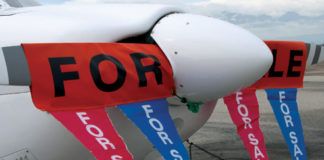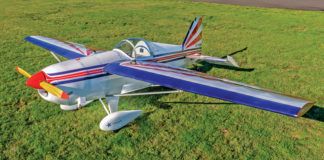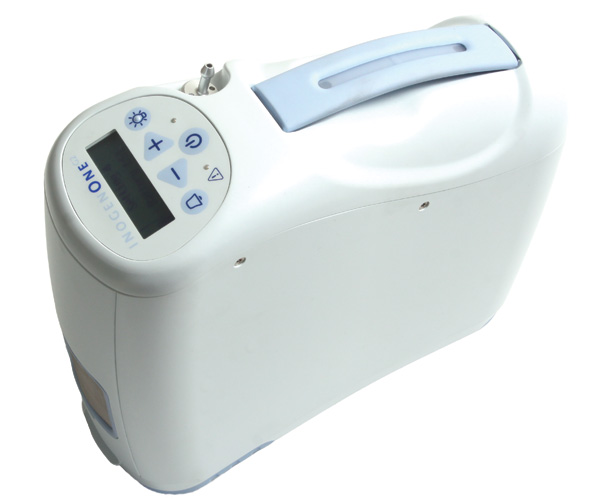
Cost-conscious pilots (is there any other kind?) will tend to use resources with care. These days we don’t run around as much at full power, guzzling fuel, and by the same token, those of us who routinely carry an oxygen system for high-altitude flight often reserve its use for the times we feel are absolutely necessary. After all, getting a bottle refilled on a long trip can be a real (and expensive) pain in the, er, cannula.
Shift the paradigm-say, make the oxygen available to the pilot essentially unlimited-and the usage model changes significantly. Now you don’t think twice about putting on the tube for higher-altitude flights, and will finally consider adhering to the recommendation to suck oxygen above 5000 feet MSL at night. The engine of this shift is an unassuming 7.5-pound white box called the Inogen Aviator.
Concentrate Hard
What, exactly, is this thing? The Inogen Aviator is a device that comes out of the medical industry and is generally known as an oxygen concentrator. Thats not to say its a simple compressor. If you think in terms of a block diagram, the Inogen takes ambient air, increases its pressure, and forces it through a zeolite filter. The zeolite separates the pressurized ambient air into oxygen and nitrogen; the nitrogen is ported off and the oxygen is captured.
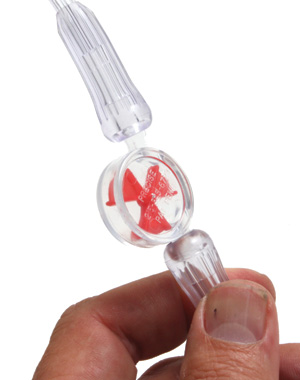
To let you know the system is operating, there’s a small pinwheel in the cannula line.
There is nothing to refill, and in the case of the Inogen, tests have cleared the mechanism to a life of 10,000 hours. (Company spokesmen say that, actually, the life is probably quite a bit longer, but thats where testing stopped.) All the device asks for is 12-volt power-nominally around 5 amps, but up to 15 amps during maximum oxygen flow rate while the internal battery is also charging. Two types of battery pack are available, good for 3 or 6 hours of independent use. Overall size is 10.7×3.9×9.5 inches, plus a small power-converter brick with a cigarette lighter plug to connect to ships power.
Ah, Feels Good
With an inexhaustible supply of oxygen, the Inogen Aviator can meter O2 to the pilot in varying levels. Like the best electronic oxygen systems, the Aviator has a sensitive pressure sensor on the machine side of the lightweight cannula. When you inhale, a slight negative pressure is generated in the line. Sensing this pressure drop, the Aviator kicks out a bolus of oxygen.
The duration and volume of the bolus depend on which of the five flow-rate settings you have selected. Setting five is maximum output, and each lower setting represents a 20% reduction in effective flow rate. On the lower three settings, the bolus is hardly noticeable. In fact, you need to look at the little pinwheel flow marker in the cannula line to know its working. On setting four of five, the bolus can be detected, and its relatively aggressive on the fifth level-though you gradually become unaware of it after a half hour or so.
I tested one of the first Inogen Aviators released over two long trips-California to Seattle for the Arlington airshow, and California to Oshkosh and back. To check the efficacy of the system I used a pulse-oximeter, and bear in mind that this was a test using one human body over the course of a little more than a month. My baseline oxygen saturation (or sats) at home near sea level is consistently 98% according to the particular oximeter used for the test.
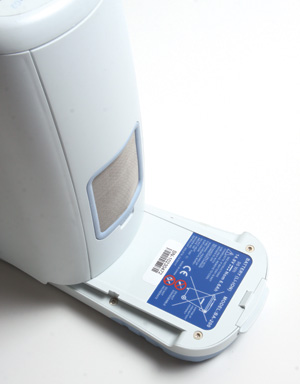
A battery pack slides out of the foot of the unit. Two capacities are offered: a 12-cell and a 24-cell system.
Lets take the stuff to altitude. One set of flights at 13,000 feet MSL, which thanks to summertime temperatures gave a density altitude of 15,800 feet, provided some insight. My sats after an hour at altitude with no oxygen was 85%. For this test, I tried each of the five settings and compared them to my current oxygen system, which uses a simple conserving cannula and a needle-valve rate adjustment-the results are in the accompanying table.
What are we shooting for? Its generally accepted that you want to keep your in-flight sats at 92 to 93%. Clearly, supplemental oxygen was indicated on my first test flight at 13,000 feet. Its also recommended that when you’re flying at night or under stressful conditions-say, an IFR flight with an approach to minimums-your sats should be 94 to 95%. Studies have shown an increase in procedural errors at reduced sats.
As you can see from the table (below), the Inogen was able to keep me within a percentage point or two of normal at altitude, and above the high stress threshold at the tested altitudes. And while its hard to know without more testing-and an airplane capable of flying quickly at altitudes where mine is wheezing-it sure looks like the Aviator could go to 17,500 feet PA (pressure altitude) and keep a healthy, average-size pilot in the happy zone. (Thats the real happy zone, not that little bit of delirium from hypoxia.)
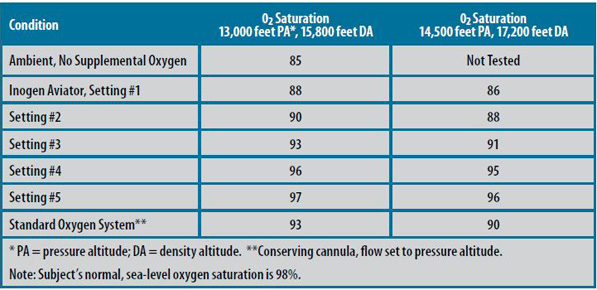
More to the Story
So thats the math, but leaving the story there does the Aviator a disservice. Im probably like a lot of pilots who carry an oxygen bottle on board in that I tend to think pretty critically about when Im going to use the stuff, and reserve it for those times when I think I must have it. In the back of my mind is the concern about running out during a long trip-and paying an FBO a huge sum to refill the bottle, assuming that it even can.
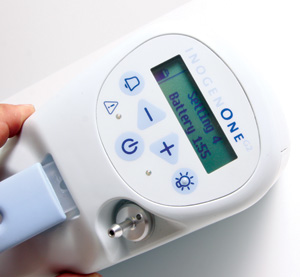
A control panel shows the level setting and battery life remaining, among other messages.
So you treat oxygen as a nonrenewable resource-at least during a long, away-from-home trip-and use it sparingly. The problem is that you might not use it to feel better or think more sharply on a long trip, or to improve your night vision when flying above 5000 feet MSL. Or worse, you might run out and have to fly above 12,500 feet to clear terrain or weather and risk, at best, feeling lousy when you land. At worst, you could be impaired for the instrument approach at the end of the flight.
Lets not discount the comfort factor. After both long trips, I landed after as much as 4.5 hours at altitude without a hint of headache. I know from experience this is uncommon, particularly on the first day of a literal cross-country.
Having an essentially inexhaustible supply of O2 on board changes your thinking radically. Now, when you fly at 10,000 feet, you don’t hesitate to use it. Cruising above 5000 feet at night? Sure, you wont give it a second thought.
Which brings us around to the bottom line. The Inogen Aviator sells direct from the distributor for $2999, and remember that in the current guise, its a single-person device; its not possible to share the output. A standard portable system with a single regulator can be had for as little as $400, though the high-end units with electronic metering system start at around $1000. The cost of refilling is another issue, of course. I have a 22-cubic-foot bottle good for a claimed 26 man-hours duration. It costs around $25 to refill locally, so call it $1/hour for O2. (The electronic systems have greater endurance, but you have to buy the equipment first.) So the economic break-even point might be reasonably close or many years of flying down the road.
For pilots who don’t need or want to fly high, or who do so infrequently, the Inogen Aviator probably isn’t worth the money. But for those who embrace convenience and who understand the literal feel good value of in-flight oxygen, the Aviator is a tempting morsel.
For more information, call 805/448-5289 or visit www.windblade.com.

